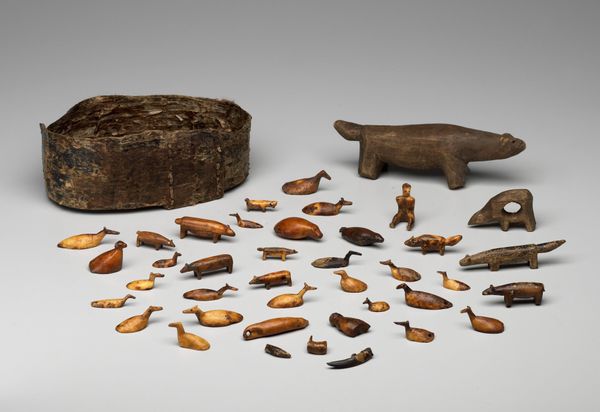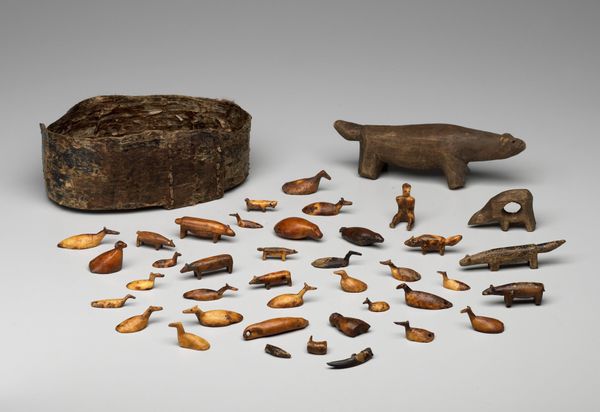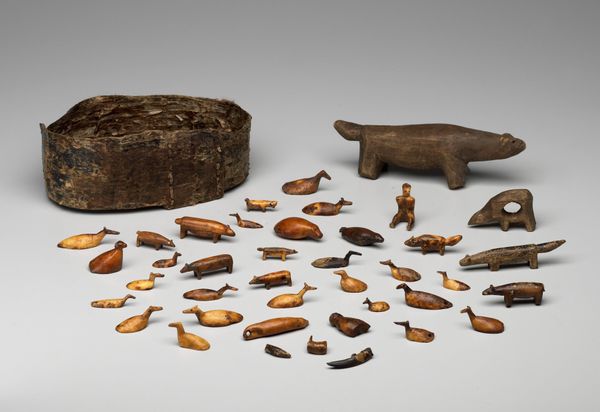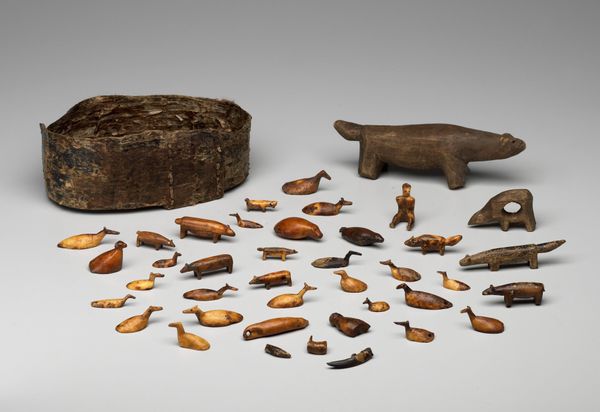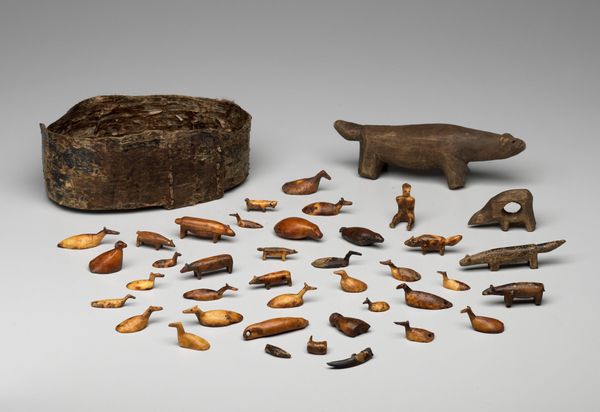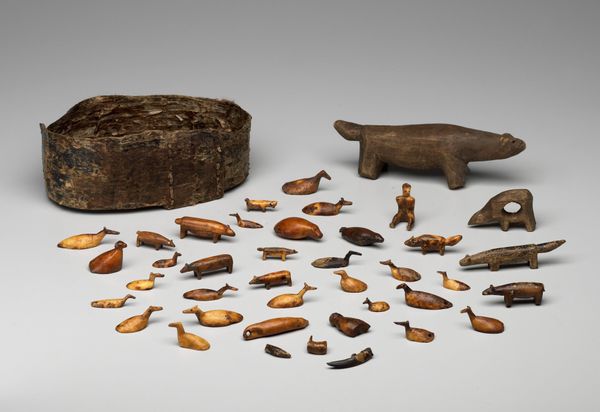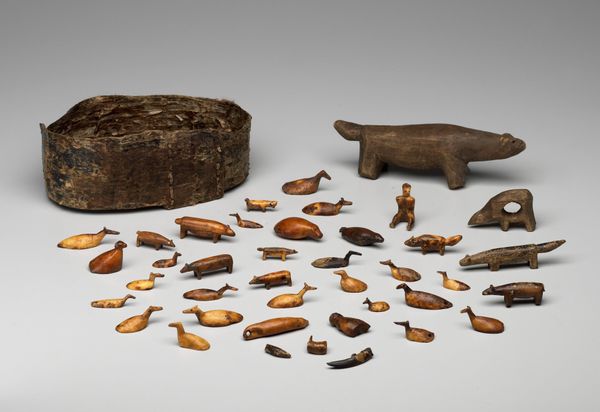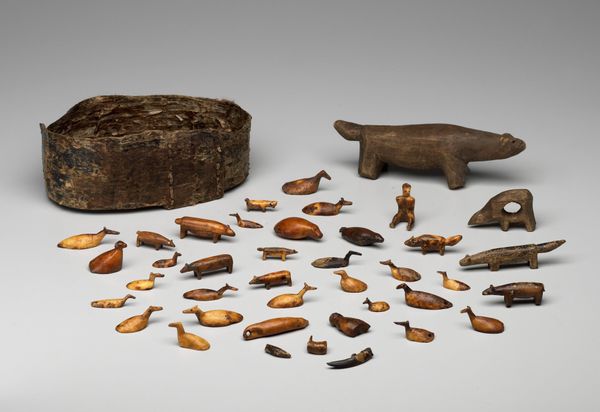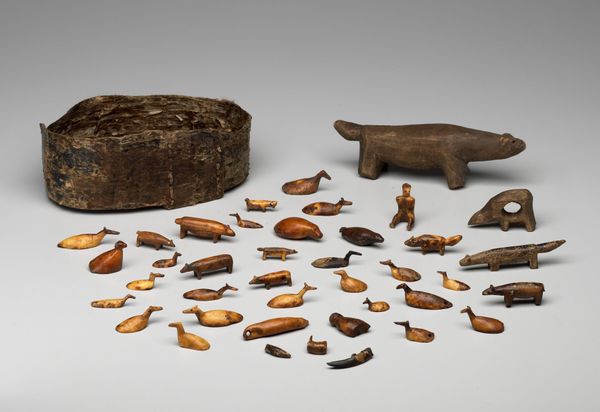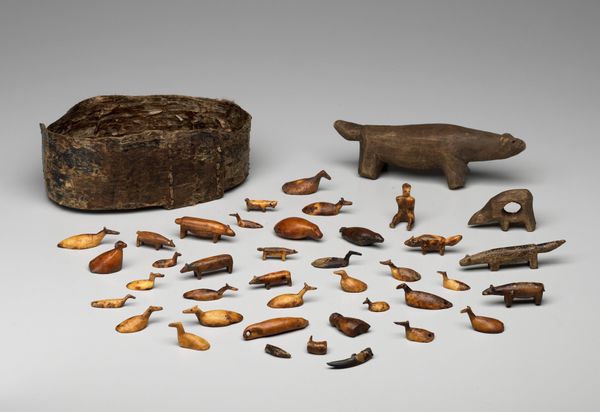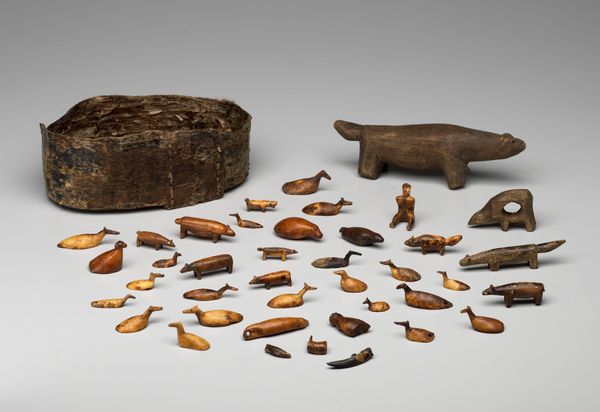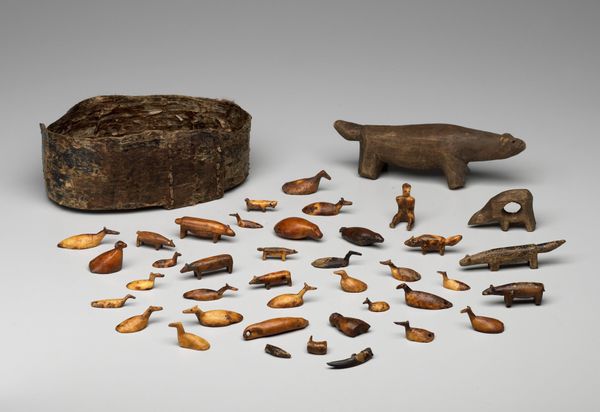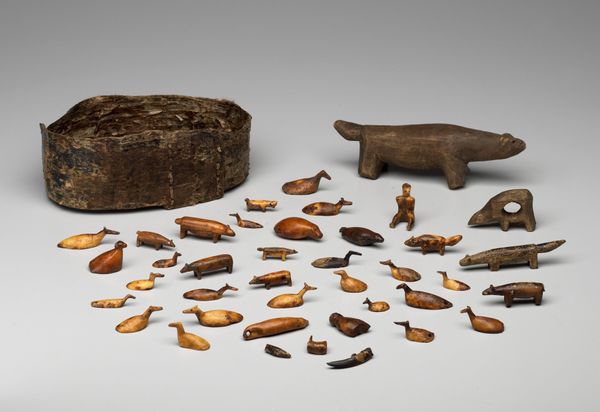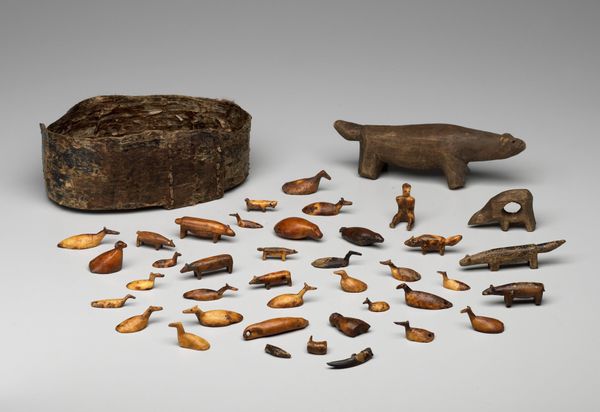
carving, sculpture, wood
#
carving
#
figuration
#
sculpture
#
wood
#
indigenous-americas
Dimensions: 9/16 x 5/8 x 5/16 in. (1.43 x 1.59 x 0.79 cm)
Copyright: Public Domain
Curator: What a collection! This assortment of miniature carvings, created before 1500 by Inuit artists, is titled "Carving Fragment" and resides here at the Minneapolis Institute of Art. Editor: They're so small! Each animal looks hand-hewn with immense patience, the surfaces smooth from handling, I imagine. It evokes a feeling of a personal, perhaps secret world. Curator: Absolutely. Consider the available materials, primarily wood and ivory, reflective of the arctic landscape and its resources. These miniature carvings provide a window into Inuit life, reflecting hunting practices, animal reverence, and the skillful utilization of available resources. Editor: I am also fascinated by the labor invested in producing each individual sculpture. These are utilitarian materials but I question who was spending time to carve and shape them? Were these commissioned, part of an economic exchange, or crafted within a household? Curator: These carvings often played a vital role in Inuit spiritual life and community, serving as grave goods or charms to secure successful hunts, demonstrating the interconnection between culture, spiritual practices, and artistry. Museums exhibiting such objects face ethical issues as well: are these for aesthetic pleasure, or should they stay where they belong? Editor: Museums transform functional, material objects into silent aesthetic commodities. And in doing so, perhaps obscure their original context within Inuit society. How did the art market influence what was selected to be shown in this context, or considered beautiful, refined, and valuable in the first place? Curator: Indeed. By displaying them, the Minneapolis Institute of Art takes a stewardship role in advocating for dialogue, appreciation, and the need to understand Indigenous perspectives regarding such ancestral objects. Editor: Right, it pushes us to contemplate the ethics and display of such intimate pieces. It asks, who benefits from their aesthetic presentation? Curator: Reflecting upon these "Carving Fragments", what endures is the potent link between materials, social context, and the ongoing dialogue regarding art’s role in public institutions. Editor: Looking closer at the handcraft, I am compelled to think about our consumption in comparison to the indigenous populations who are in deep contact with the raw materials, as opposed to purchasing it from a store or a mine.
Comments
No comments
Be the first to comment and join the conversation on the ultimate creative platform.
